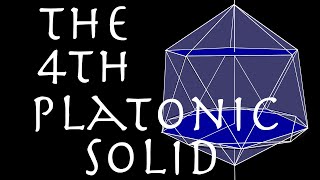Compound of two icosahedra
This uniform polyhedron compound is a composition of 2 icosahedra. It has octahedral symmetry Oh. As a holosnub, it is represented by Schläfli symbol β{3,4} and Coxeter diagram . The triangles in this compound decompose into two orbits under action of the symmetry group: 16 of the triangles lie in coplanar pairs in octahedral planes, while the other 24 lie in unique planes. It shares the same vertex arrangement as a nonuniform truncated octahedron, having irregular hexagons alternating with long and short edges. The icosahedron, as a uniform snub tetrahedron, is similar to these snub-pair compounds: compound of two snub cubes and compound of two snub dodecahedra. Together with its convex hull, it represents the icosahedron-first projection of the nonuniform snub tetrahedral antiprism. (Wikipedia).




















